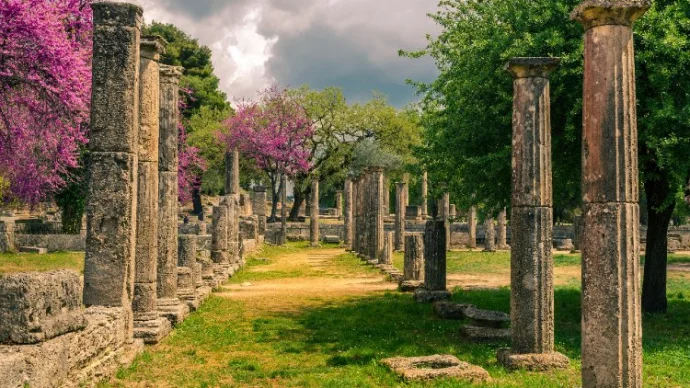About The Propylaia
The Propylaia (also spelt Propylaea) was the grand entranceway to the Acropolis. Begun in approximately 437 BC under the supervision of the architect Mnesikles, works on the Propylaia continued until 432 BC but were never completed.
Nevertheless, even in its unfinished state the Propylaia is considered to be of great architectural importance and beauty. Featuring external Doric and internal Ionic columns, all built in Pentelic marble, the Propylaia would have been an impressive building.
The Propylaia was fairly well preserved until the 17th century when it was devastated by an explosion. Today, the Propylaia ruins form a dramatic sight within the Acropolis complex.
The Propylaia history
Commissioned by the Athenian leader Pericles as part of rebuilding the Acropolis after the Persian Wars, the Propylaia was the monumental gateway to the Acropolis of Athens. Pericles appointed his friend and architect Phidias to supervise the project, although according to Plutarch, the Propylaia was designed by the mysterious Mnesikles. Construction started in 437 BC and ended in 432 although the building was left unfinished.
The unfinished Propylaia was made from beautiful and expensive white Pentelic marble and accented with grey limestone. The building consisted of a central building of 6 Doric columns for those entering and departing the Acropolis to travel through.
Although not built as a fortified structure, the Propylaia controlled those who visited the Acropolis, within which anyone could claim the safety of the gods and the state treasury was held. Plutarch wrote that helping to guard the Propylaia was a bronze statue of a lioness without a tongue, in dedication to the Leaena, a mythological woman who resisted torture. The Athenian Propylaia would serve as a model for other Greek propylaea.
During the Duchy of Athens in the middle ages, the Propylaia served as the palace of the Acciaioli family who ruled the duchy from 1338 to 1458. However, the Propylaia was severely damaged in an powder magazine explosion in 1656, foreshadowing the similarly awful damage to the Parthenon in 1687.
Since 1984, the Propylaia has been partially restored, serving as the main entrance to the Acropolis once again.
The Propylaia today
Today, visitors to the Acropolis still walk through the magnificent Doric columns of the Propylaia, following in ancient footsteps as the Parthenon Temple to Athena comes into view. The pale marble columns are lined with hand rails to guide you through the dramatic ruins, overshadowed by a small reconstructed roof.
The best time to visit is in the early morning when there are no other visitors and the sun is rising over the Acropolis hill.
Getting to The Propylaia
It is easiest to travel Athens via public transport. The Monastiraki metro station is only a 12 minute walk from the Propylaia. Otherwise, the 230 bus will take you right to the bottom of the Acropolis hill entrance, from which the Propylaia is a 6 minute walk.
Featured In

Ancient Greek Ruins
Immerse yourself in classical history by stepping into the world of Ancient Greece. Here's our pick of 10 essential sites to visit.

Greece Historic Sites
Alongside its contributions to philosophy, astrology, and medicine, Greece's sites from classical antiquity have stood the test of time. Here are 10 must-see sites for any visiting history enthusiast.




















